Growing eggplants in a greenhouse

Growing eggplants in greenhouses is very popular with vegetable growers. This method of cultivation allows you to get a high yield of fruits even in the most severe climatic zone. Today we will tell you in detail how to plant eggplants in greenhouses and how to care for them.
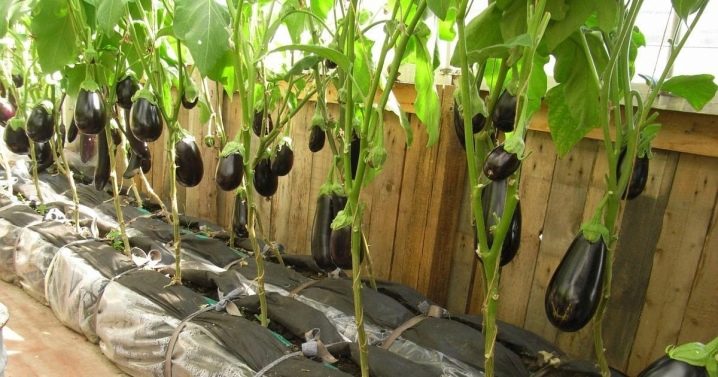
The necessary conditions
There are several types of closed ground, the conditions of which are acceptable for the cultivation of eggplants.
- Greenhouse. It is installed directly on the ground. The bed is protected with a film or any transparent covering material that helps to protect young plants from adverse external factors (wind, temperature drop, draft). This method of growing eggplants is suitable for the warm season.
- Greenhouse. Allows you to get the fruits of eggplants all year round, suitable for use in winter. A typical structure is placed on a foundation; polycarbonate or glass is used as a covering material. Inside is a heating block, floors, irrigation system and lighting.
As a rule, tall bushes are grown in greenhouses, growing up to 1.5-2 m. Therefore, greenhouse buildings must be high enough. Most often they are made arched or gable.
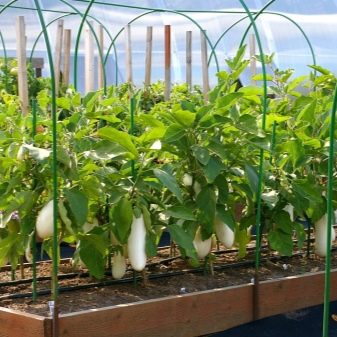
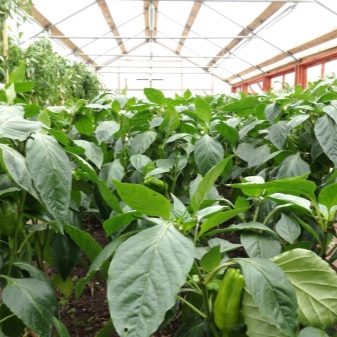
Among the basic requirements for greenhouses, the following are distinguished.
- The ability to create an optimal microclimate for the "blue". Best of all, this culture grows and develops in a temperature range of + 20-35 degrees. The plant requires 14 hours of daylight hours, so additional lighting should be installed in the room.
- Convenience of planting care. The owner of the greenhouse should have free access to the beds, there should be no obstacles or hindrances to weeding, watering and other agrotechnical manipulations.
- Resistant to weathering. Greenhouse cover material must be able to withstand rain, hail, scorching sun and strong winds.
Eggplants grow best in nutritious, light, water-intensive and well-drained soils. On heavy substrates, as well as with increased acidity, the plant often develops root rot. Like all nightshade crops, eggplant responds well to organic fertilizing, therefore, before planting seedlings, it is advisable to enrich the soil with humus, manure or compost.
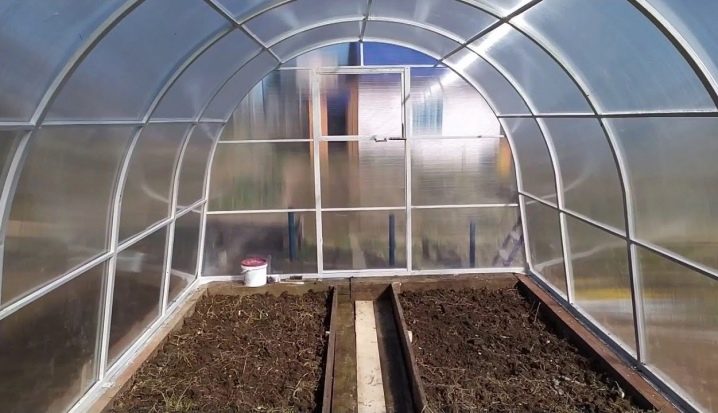
Different types of eggplants can be planted in greenhouses. However, it is considered more rational to grow plants with a short ripening period. In general, the varieties and hybrids of this crop, passing for greenhouse cultivation, must meet the following requirements:
- early or middle ripening period;
- gradual release of fruits;
- resistance to infections and pests;
- the height of the bushes is not lower than 70 cm;
- good taste.

The most common greenhouse eggplants include the following varieties:
- "Bibo F1";
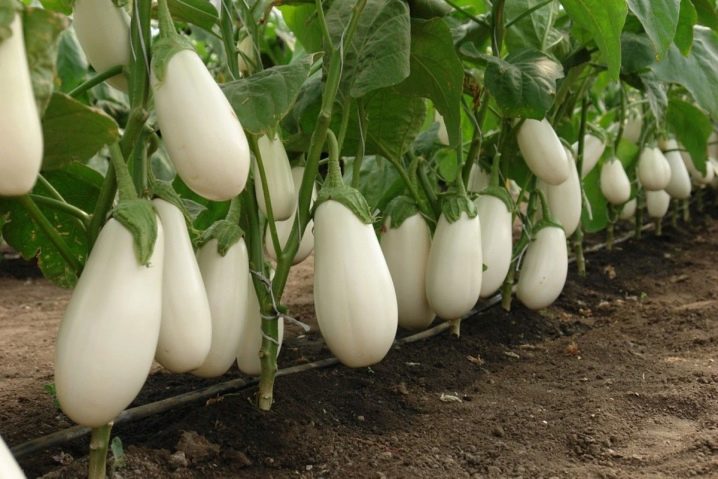
- "Alenka";
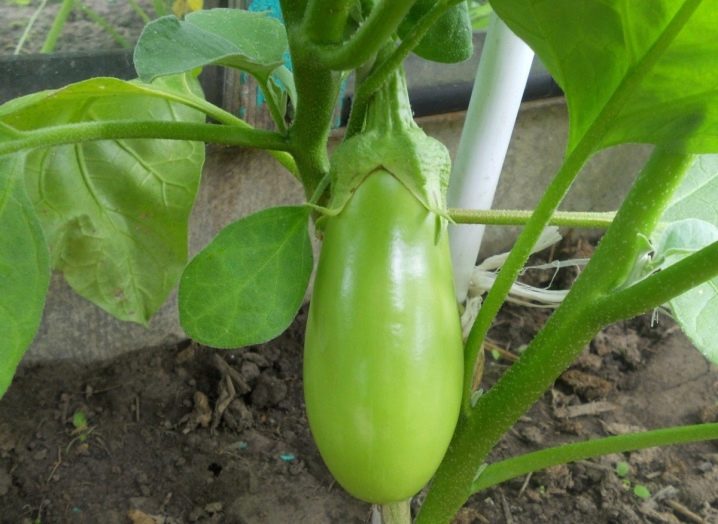
- "Pink flamingo";

- "Joker";
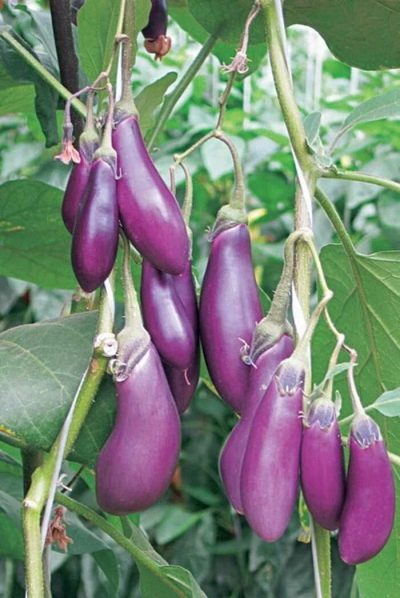
- Viola di firenze;

- Goliath F1;
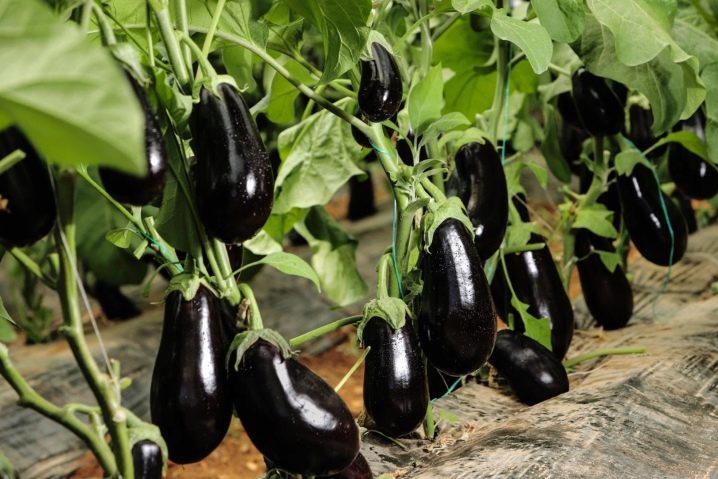
- "Maxik F1".

Landing dates
The period of planting eggplants in greenhouses directly depends on the climatic features of the growing region. On average, dates vary from mid-April to mid-June. So, in the Kuban and in the neighboring southern regions, eggplants are planted already in April, and in the Leningrad region they are planted much later.
The exact landing time is selected taking into account weather factors.It is important that at least 2 weeks have passed after return frosts, and at the same time the average daily temperature is set at +18 degrees, and the earth warms up to +15 degrees.
However, in the greenhouse, the necessary conditions can be adjusted artificially, so here the plants are more protected than eggplants grown on the street.
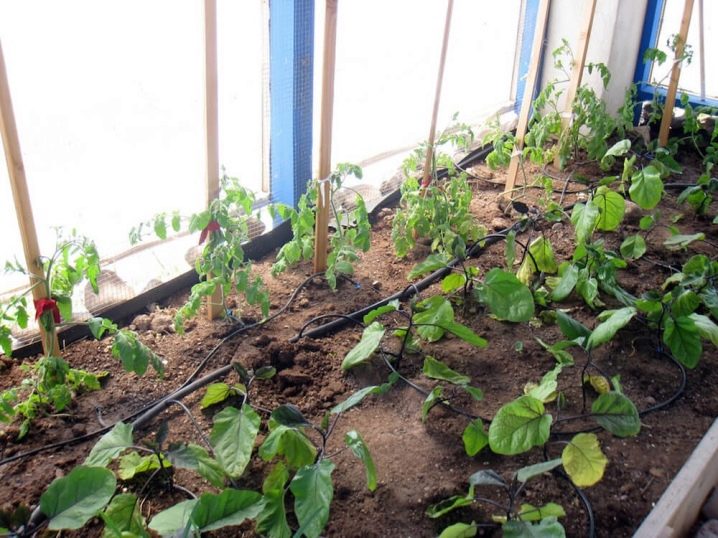
Greenhouse preparation
Before starting sowing work, the greenhouse and the substrate should be thoroughly disinfected. If you neglect such processing, then the plants will hurt and wither. The greenhouse must be thoroughly washed:
- the covering material is treated with a solution of laundry soap;
- for polycarbonate, potassium permanganate is used;
- metal areas are cleaned with a hot vinegar solution.
After washing, open the doors and dry the greenhouse.
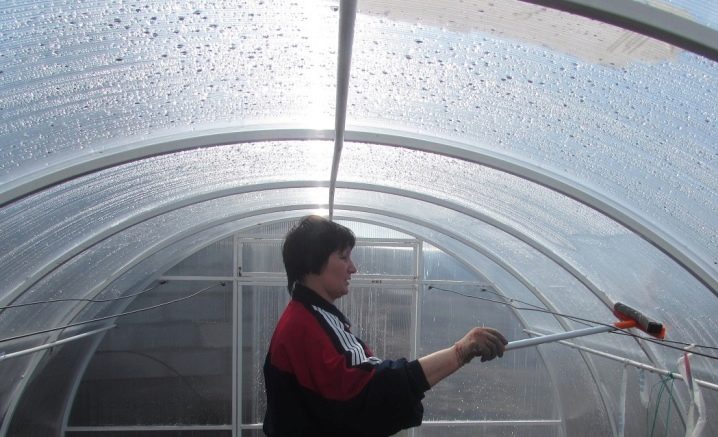
The next stage of preparation is disinfection, for this they resort to several techniques.
- Sulfur checker it is used exclusively in greenhouses and greenhouses with a timber frame; it is not suitable for buildings with metal elements. The gas released by the saber penetrates into all the cracks and deactivates the room completely. To achieve the maximum effect, the greenhouse is closed for 2-3 days, after which it is ventilated.
- Chlorine. All structural elements of the greenhouse are washed or sprayed with a solution of bleach. The drug has the ability to disinfect even highly infected soil. The processing of wooden elements of the building is carried out especially carefully.
- Biologicals do not give such a quick and good effect as bleach or sulfuric bombs, but have a more gentle effect. Such funds are able to destroy pathogens and at the same time improve soil fertility.
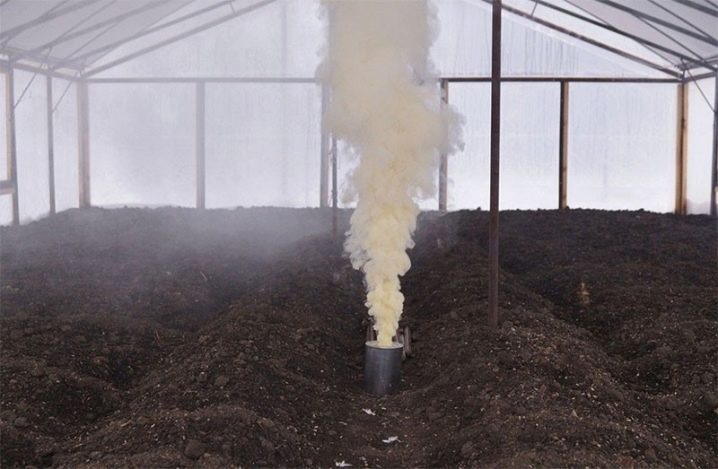
Special attention is paid to the preparation of the land. The soil must be dug up, the remaining plant roots must be removed and disinfected. For this, different formulations are used.
- Potassium permanganate. With a light solution of potassium permanganate, carefully shed all the soil. Planting can be done after a few days.
- Bleaching powder. Dry powder is scattered on the ground and carefully covered with a rake. Plants can be planted no earlier than a month after the treatment.
- Formalin. This drug is capable of destroying bacteria and other pathogenic microorganisms, including black leg. After cultivation, the land must be covered with agrofibre or film for two days.
An alternative method of exposure involves processing the soil with hot steam, for this purpose, special equipment is used. A more affordable option is to treat future beds with boiling water.
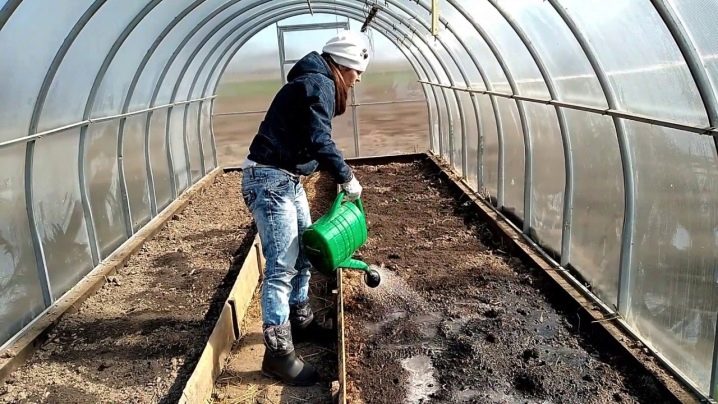
Planting methods
There are two main ways of planting "blue": seed and seedlings.
Seeds
If you are going to grow eggplants in a greenhouse, then you do not have any need to pre-create seedlings. You can immediately place the seedlings in the substrate. To do this, you will need lattice stencils with 9x9 or 7x7 cells.
Sowing procedure step by step:
- stencils are placed on a site prepared for planting;
- seedlings are laid in the center of each cell, deepening them by 4-6 mm;
- when the plants get stronger, they will need to be planted.
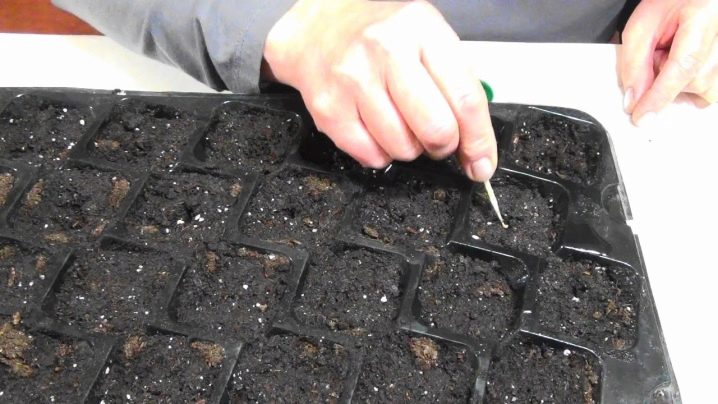
Seedlings
When planting seedlings, it is necessary to thoroughly moisten the soil in the container for 1.5-2 hours: this will allow you to quickly and without the risk of damaging the roots to extract the bush along with the earthen clod. If eggplants were grown in peat pots, they are planted in the ground directly in them, since they quickly decompose in the ground and serve as an additional source of nutrients for the plant.
Work order:
- in the beds forms holes 20-25 cm deep;
- a handful of humus is introduced into each;
- the pits are thoroughly watered at the rate of 2 liters of a weak solution of potassium permanganate for each well;
- when the moisture is completely absorbed into the soil, seedlings are placed in it, while the root collar is deepened by 8-10 mm, no more;
- the roots are carefully sprinkled with a dry substrate, spud and compacted with your hands;
- in conclusion, the planted seedlings are watered again abundantly.

How to take care of it properly?
In order for greenhouse eggplants to grow well, develop and give a rich harvest, you need to provide them with proper care. The secret of agricultural technology is simple: they need watering, fertilization, garter, loosening, as well as prevention against diseases and pests.
Watering
Eggplants love water and react acutely to a lack of it. Deficiency of moisture leads to wilting of flowers; it is not worth waiting for a good harvest in such conditions. For irrigation, use water that has been settled for 1.5-2 days, heated to 23-25 degrees. Watering is carried out directly under the root, it is highly undesirable to allow moisture to enter the leaves.
The first irrigation is performed 5 days after planting the seedlings in the greenhouse. Further, the amount of water is reduced to 1 time per week. At the stage of formation and ripening of the crop, the bushes are watered every three days, and if the weather is sultry, the frequency of watering is further increased. Tip: if the temperature is high in the greenhouse, be sure to spray the paths in the aisles with cool water.
The volume of water is calculated in such a way that the moisture completely saturates the ground to a depth of at least 20-25 cm. In a greenhouse environment, the drip irrigation technique is most effective. In the absence of such a system, you can manually water with a ruler with an elongated spout.
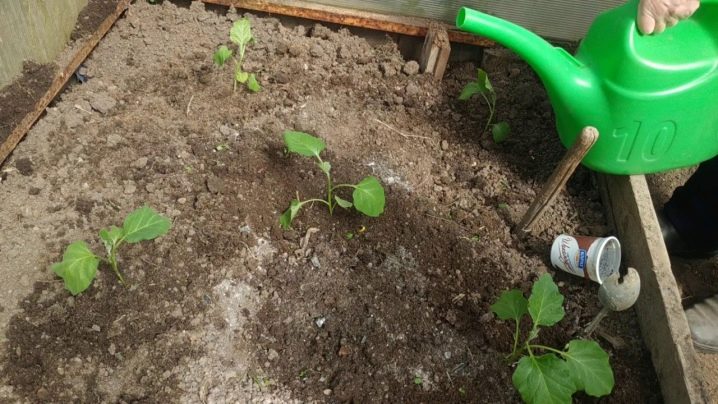
Top dressing
Eggplant culture is very demanding on the quality of the soil, so it needs periodic feeding. Fertilizers are applied 3 to 5 times. To do this, you can use ready-made universal fertilizers, and you can buy them at any store for gardeners and gardeners.
The very first top dressing is applied two weeks after planting the seedlings. When the bushes are lethargic, foliar feeding is additionally required, in this case a weak solution of boric acid gives a good effect. Before the ovaries appear, the "blue" ones require complex fertilizers, and when the fruits are set, they need an increased dose of potassium. As soon as the first fruits appear, compounds with a high content of nitrogen and phosphorus are introduced into the ground. It is better not to give organic matter at this moment, as it can cause an active build-up of green mass. At the fruiting stage, the introduction of potassium sulfate and ash will be of great benefit.
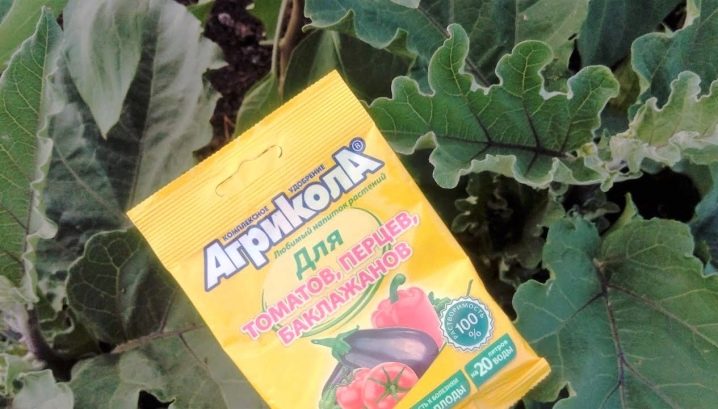
Experienced gardeners use the following feeding scheme.
- After 14-20 days after planting, a solution of azofoska is introduced at the rate of 2 tbsp. l. on a bucket of water. 500 ml of the preparation is poured under each bush.
- At the flowering stage, spraying with a weak solution of boric acid is performed. For this, 1 g of the product is dissolved in 5 liters of water.
- At the moment of ovary formation, a mullein solution diluted in a ratio of 1 to 10 is poured under the root of the plant. Top dressing is applied at the root, then repeated several times at intervals every 2 weeks.
- When the eggplants bear fruit, the potassium and nitrogen content should be increased, so the bed is fertilized again with Azophos. This time, 6 tbsp is taken for 10 liters of water. l. drug.
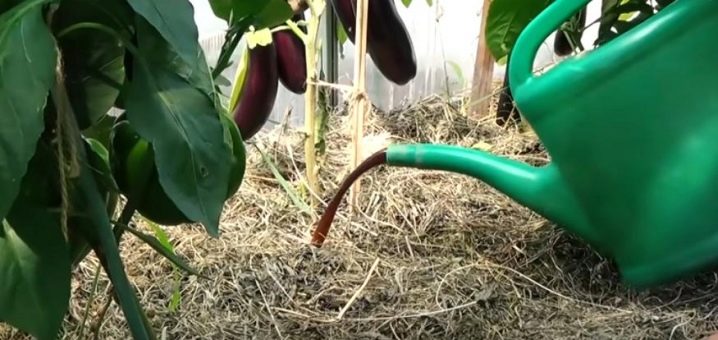
Loosening
Usually, after irrigation and rain, a crust appears on the ground, which makes it difficult for air to get to the roots. That is why, after each irrigation, the soil must be carefully loosened. So, if watering was done in the morning, then loosening should be carried out in the afternoon. The working depth should be 15 cm.
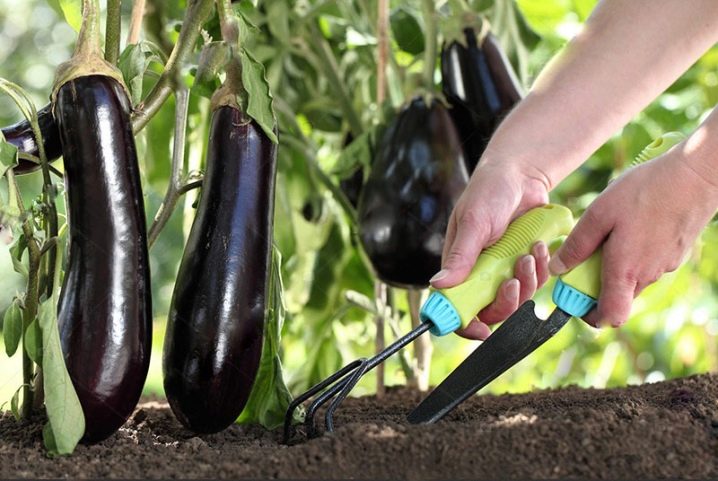
Formation
The peculiarities of the formation of eggplant bushes directly depend on the variety. Low-growing varieties do not need it, they do not need to be tied up. The only thing such plants need is the timely removal of dried fragments and damaged fruits. Medium and tall plants need to be tied to trellises, otherwise they will simply break under the mass of fruits.
Usually, a bush is formed 10-15 days after planting seedlings. If the plants are too weak, work is postponed for a couple of weeks.
When the eggplant bush reaches 35 cm, it is recommended to pinch the top. This measure will stimulate the active growth of lateral shoots. In this case, a fork is left from a pair of the strongest shoots, and all the ovaries located below, stepsons and side shoots are removed. You can also remove some of the ovaries.
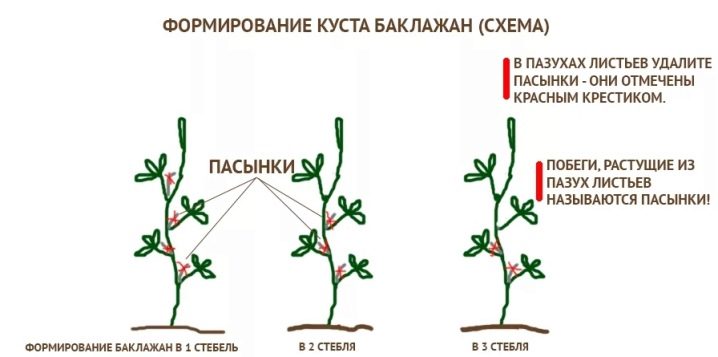
Mulching
To prevent moisture loss and maintain an optimal level of soil moisture, they resort to mulching. It will reduce the amount of irrigation and prevent many diseases that are dangerous for the "blue". Most often, peat, rotted manure, compost and sawdust are used as mulch. You can mulch the beds with straw and cut grass.
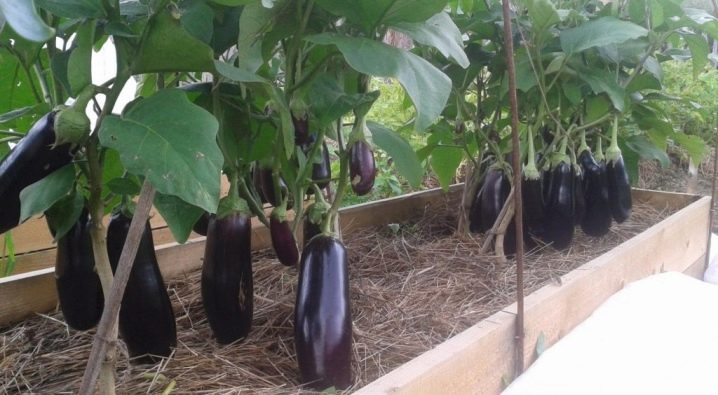
Diseases and pests
The same diseases are typical for eggplant as for many other nightshade crops. When cultivated in greenhouses, they often encounter anthracnose, tobacco mosaic, late blight, as well as all types of rot. To a large extent, this is facilitated by high humidity and poor ventilation in the room. To prevent diseases, attention must be paid to preventive measures:
- thoroughly disinfect the greenhouse itself and all the tools used;
- treat plants with growth stimulants;
- make periodic dusting with tobacco or mustard powder.
The most common pests of "blue" are slugs, midges, fleas, whitefly, Colorado potato beetle, as well as spider mites, ants and aphids. They appear in greenhouses along with the ground or through the vents. When any of them appears, you need to fight with special drugs, for example, "Strela". Folk remedies give a good effect against insects: processing with infusion of tomato tops, garlic or spraying with crushed ash.
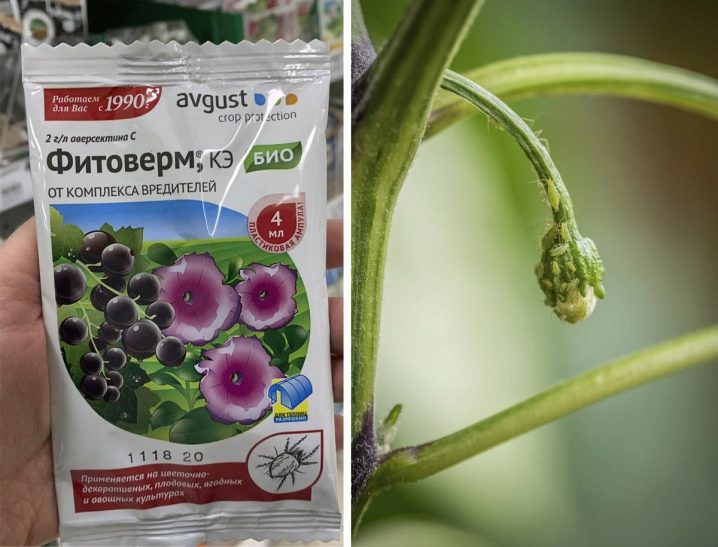
Eggplant is a very demanding crop. Despite the fact that the most comfortable conditions are created in greenhouses, vegetable growers often face the following problems.
- The appearance of spots on the sheets. If they are not associated with infectious diseases, most likely the reason is the close proximity of the backlight or exposure to ultraviolet rays.
- Poor growth after planting seedlings. Usually, during the first 10-14 days, the seedlings adapt to the new environment and hardly grow, this is absolutely natural. But if the green mass does not grow further, it is advisable to feed the plants with Kornevin solution.
- The leaves burn / turn white / yellow and fall off. Three options are possible here: a violation of the humidity regime, the introduction of an excessive amount of fertilizers or infectious diseases.
- The plant sheds ovaries. This often happens with excess or lack of watering.
- The ovaries are poorly formed with good development of the bush. Probably, the reason is associated with an overdose of nitrogen-containing fertilizers or a lack of pollination.
- If the bushes bloom profusely and the fruits do not set, they must be manually pollinated.









The comment was sent successfully.